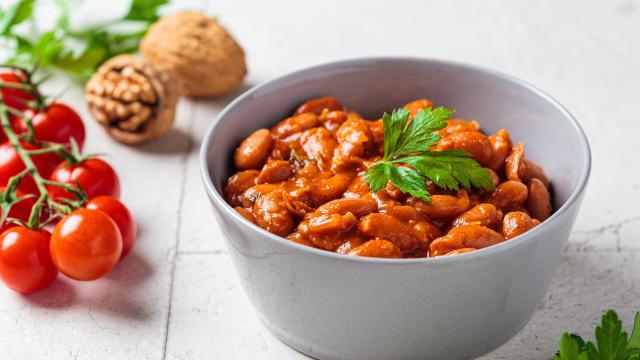If you’re getting bored of your regular autumn and winter soups, you can always add a bit of unexpected texture with a handful of nuts.
Adding nuts to soups, curries, and stews is something rather common in multiple Asian, African, Eastern European cuisines, to name a few. They’re not just sprinkled on top for crunch, but stewed and softened right in the dish. My mum always tells me peanuts belong in massaman, but if you don’t have any of those you can use whatever nut you have on hand; and malai kofta is a creamy Indian dish that incorporates cashews in multiple ways to build flavour and add two different textures.
When you add nuts to a liquid-based dish that simmers for any period of time, like a soup, stew, curry, or chilli, the nuts absorb some of that liquid and become tender, similarly to how beans or a root vegetable can start out crunchy and become soft after stewing. But nuts don’t just become soft, they become velvety, holding onto a shadow of their former texture. Simply put, they have “a chew” to them. Nuts won’t disintegrate into the dish unless you blend them, so a simmered cashew will look the same as a dry roasted one. It’s when you bite into it that your notion of nuts in stews will change. The texture is tender and supple, and the warmed fats burst forward to flavour the entire bite.
Incorporating nuts into your dishes couldn’t be easier. In fact, it’s almost careless — a cupboard-emptying-afterthought. Prepare your soup, curry, chilli, or stew as you normally would, and after you add the liquid ingredient, toss in a handful of nuts. There’s no need to really measure the amount, a handful is just the right amount to discover a nut every two or three bites. There’s usually no need to chop them, most nuts are relatively small to begin with, and in my experience, you can’t over-simmer the nuts. Whatever the amount of time that it takes to simmer the rest of the ingredients is enough for the nuts too. Even if you simmer only for a short time, the nuts will be a pleasant mixture of soft and sturdy, but no longer crunchy. Generally, after 20 minutes, peanuts and cashews will become soft, retaining a bit of their sturdy structure. After 30-40 minutes they should be quite soft. Cooking them in a slow cooker or Instant Pot will likely bring the nuts to their softest point.
I most commonly use peanuts, cashews, and almonds in my chillis and stews, rather interchangeably because they seem to go with everything, but pistachios, pine nuts, and hazelnuts are also fine choices. Larger nuts like walnuts and pecans aren’t a common soup nut for me, but they will definitely work the same way. Lobio, a Georgian bean stew, uses chopped walnuts to add texture and flavour. If dealing with larger nuts pecans or walnuts, it helps to break them in half or chop them up to make them more bite-sized, and to ensure a short cooking time.
Adding nuts to your dishes is a nice accent to the other ingredients, but it’s not the main event. If you’re on the fence about it then start with a small handful. Unless they’re blended, nuts don’t really imbue the entire dish with their flavour. Although I’m confident nut-lovers will enjoy this, this is one of the rare moments that you can go ahead and try something new, and if it’s not your vibe, push them off to the side and it’s like they were never there. But you should try it at least once. You can’t say you don’t like something if you’ve never tried it.

Leave a Reply
You must be logged in to post a comment.